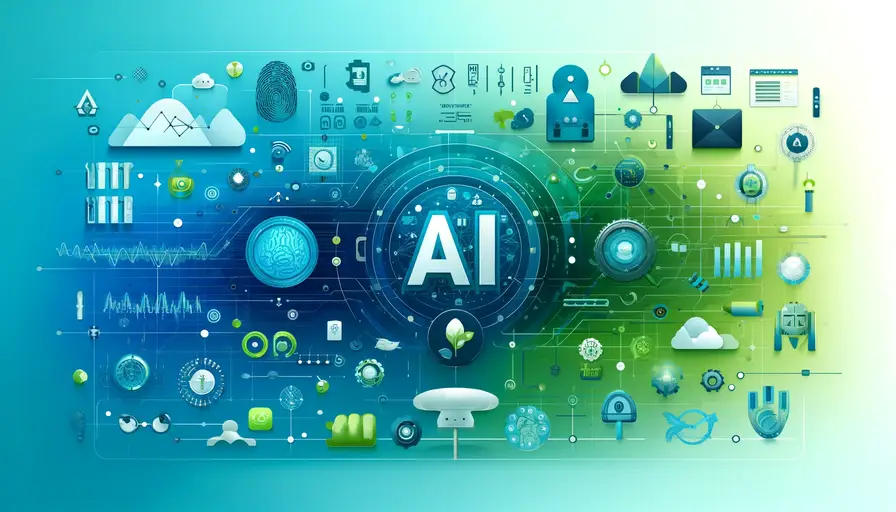
Machine Learning Towards Fully Automated Systems

- Accurate Predictions and Decision-Making in Various Industries
- Automated Machine Learning Tools Will Make It Easier for Non-Experts to Utilize Machine Learning Techniques
- The Integration of Machine Learning with Other Technologies, Such as Robotics, Will Lead to Fully Automated Systems in Various Domains
- Natural Language Processing Will Allow Machines to Understand and Generate Human-Like Text
- Machine Learning Will Play a Significant Role in the Development of Autonomous Vehicles
- Computing Power and Cloud-Based Solutions
- Ethical Considerations and Guidelines Will Be Developed
- Advancements in Healthcare
- Machine Learning Will Free Up Human Resources to Focus on More Complex and Creative Work
Accurate Predictions and Decision-Making in Various Industries
Impact on Industries
Machine learning algorithms and models are poised to revolutionize numerous industries by enhancing the accuracy of predictions and the efficiency of decision-making processes. For instance, in the financial sector, improved predictive models can better assess credit risk, detect fraudulent activities, and optimize investment strategies. In healthcare, machine learning can aid in early disease detection, personalized treatment plans, and efficient resource allocation.
The retail industry also stands to benefit significantly from advanced machine learning models. Enhanced customer segmentation, demand forecasting, and personalized marketing strategies can lead to higher customer satisfaction and increased sales. Furthermore, predictive maintenance in manufacturing can reduce downtime and operational costs, thereby improving overall productivity.
Agriculture is another sector where machine learning can make a substantial impact. Predictive models can optimize crop yields, monitor soil health, and manage supply chains more effectively. By analyzing data from various sources, farmers can make more informed decisions, leading to sustainable farming practices and increased food production.
Challenges and Considerations
Despite the potential benefits, implementing machine learning in various industries comes with its own set of challenges. One major concern is the quality and availability of data. Accurate predictions and decisions rely heavily on large, high-quality datasets. Industries must invest in data collection and management systems to ensure they have reliable data for their machine learning models.
 Will Machine Learning Surpass Human Intelligence in the Future?
Will Machine Learning Surpass Human Intelligence in the Future?Another significant challenge is the interpretability of machine learning models. While complex algorithms like deep learning can make highly accurate predictions, their decision-making process can be opaque. This "black box" nature of some machine learning models can be problematic, especially in industries like healthcare and finance, where understanding the rationale behind decisions is crucial.
Ethical considerations also play a crucial role. Ensuring that machine learning models are unbiased and do not perpetuate existing inequalities is vital. Industries need to develop and adhere to ethical guidelines that promote transparency, fairness, and accountability in their machine learning applications.
Automated Machine Learning Tools Will Make It Easier for Non-Experts to Utilize Machine Learning Techniques
The Benefits of Automated Machine Learning
Automated Machine Learning (AutoML) tools simplify the machine learning process, making it accessible to non-experts. These tools automate many aspects of the machine learning pipeline, including data preprocessing, feature selection, model selection, and hyperparameter tuning. By doing so, AutoML tools enable businesses and individuals without extensive machine learning expertise to develop and deploy models effectively.
One significant benefit of AutoML is the reduction in time and effort required to build machine learning models. Traditional model development involves numerous iterative steps that can be time-consuming and require specialized knowledge. AutoML streamlines these processes, allowing users to quickly generate models that meet their needs.
 The Future of Data Science: Can AI Replace Data Scientists?
The Future of Data Science: Can AI Replace Data Scientists?Another advantage is the democratization of machine learning. By lowering the barriers to entry, AutoML tools enable a broader range of people and organizations to leverage machine learning. This can lead to increased innovation and the application of machine learning in diverse fields such as healthcare, education, and small businesses.
The Future Outlook
The future of Automated Machine Learning looks promising, with continued advancements expected to further enhance its capabilities. As these tools become more sophisticated, they will be able to handle more complex tasks and larger datasets. This will open up new opportunities for automation and efficiency across various industries.
One area of development is the integration of AutoML with other technologies, such as cloud computing and edge computing. This integration will enable more scalable and efficient processing of data, allowing users to build and deploy models more quickly and cost-effectively.
Moreover, ongoing research in the field of AutoML aims to improve the interpretability and transparency of the models it generates. By making these models easier to understand and explain, users can have greater confidence in their predictions and decisions, which is particularly important in critical applications such as healthcare and finance.
 The Future of Machine Learning: Rising Demand and Opportunities
The Future of Machine Learning: Rising Demand and OpportunitiesThe Integration of Machine Learning with Other Technologies, Such as Robotics, Will Lead to Fully Automated Systems in Various Domains
Advancements in Machine Learning and Robotics
Machine learning and robotics are converging to create fully automated systems capable of performing complex tasks without human intervention. This integration leverages the strengths of both fields, combining the adaptability and learning capabilities of machine learning with the precision and efficiency of robotics.
One significant advancement in this area is the development of autonomous robots that can navigate and interact with their environment. These robots use machine learning algorithms to process sensory data, make decisions, and execute tasks. For example, autonomous drones can perform inspections and maintenance in hazardous environments, while robotic arms in manufacturing can adjust their operations based on real-time data.
Another area of progress is in collaborative robots, or cobots, designed to work alongside humans. These robots can learn from human actions and adapt their behavior accordingly. By integrating machine learning, cobots can improve their performance over time, enhancing productivity and safety in various industries.
The Benefits of Fully Automated Systems
The benefits of fully automated systems are manifold, offering increased efficiency, accuracy, and safety. Automated systems can operate continuously without fatigue, leading to higher productivity and consistent performance. In industries such as manufacturing, automation can reduce the likelihood of human error, resulting in higher-quality products and fewer defects.
 Quantum Computing's Impact on Black Box Machine Learning Algorithms
Quantum Computing's Impact on Black Box Machine Learning AlgorithmsIn addition to efficiency gains, fully automated systems can also enhance safety, particularly in hazardous environments. For instance, autonomous robots can perform tasks in extreme conditions, such as deep-sea exploration or space missions, where human presence is risky or impractical. This reduces the need for human intervention and minimizes the potential for accidents and injuries.
Furthermore, automation can lead to cost savings by reducing labor costs and improving resource utilization. Automated systems can optimize workflows, reduce waste, and streamline operations, leading to significant financial benefits for businesses. These systems can also scale easily, allowing companies to expand their operations without proportionally increasing their workforce.
The Future of Machine Learning and Automation
The future of machine learning and automation promises even greater advancements and broader applications. As machine learning algorithms continue to improve and robotics technology advances, we can expect to see more sophisticated and capable automated systems.
One area of focus is the development of general-purpose robots that can perform a wide range of tasks. These robots will be equipped with advanced machine learning algorithms that enable them to learn new skills and adapt to different environments. This versatility will make them valuable assets in various industries, from healthcare to logistics.
 Unveiling the Transition from Machine Learning to AI
Unveiling the Transition from Machine Learning to AIAnother exciting prospect is the integration of machine learning and robotics with the Internet of Things (IoT). This combination will enable the creation of intelligent, interconnected systems that can communicate and collaborate seamlessly. For example, smart factories could use IoT sensors and machine learning to optimize production processes in real-time, leading to increased efficiency and reduced downtime.
Natural Language Processing Will Allow Machines to Understand and Generate Human-Like Text
The Power of Understanding
Natural Language Processing (NLP) is a branch of machine learning focused on enabling machines to understand and interpret human language. Advances in NLP have significantly improved the ability of machines to comprehend text, making interactions with computers more natural and intuitive.
One key area of development in NLP is sentiment analysis, which involves determining the sentiment or emotion expressed in a piece of text. This capability is widely used in customer service, where it helps businesses understand customer feedback and respond appropriately. For example, by analyzing social media posts, companies can gauge public opinion and address issues proactively.
Another important application of NLP is in information retrieval and extraction. NLP algorithms can sift through vast amounts of text data to find relevant information and present it in a structured format. This is particularly useful in fields like law and medicine, where professionals need to quickly access specific information from large documents.
 Machine Learning or Robotics for the Future
Machine Learning or Robotics for the FutureGenerating Human-Like Text
Generating human-like text is another area where NLP has made significant strides. Advanced models like GPT-4 can produce coherent and contextually appropriate text, enabling a range of applications from automated content creation to interactive chatbots.
For instance, in customer support, chatbots powered by NLP can handle routine inquiries, providing quick and accurate responses. This not only improves customer satisfaction but also frees up human agents to focus on more complex issues. In content creation, NLP models can generate articles, reports, and summaries, assisting writers and researchers in their work.
An example of text generation using GPT-4:
from transformers import GPT2LMHeadModel, GPT2Tokenizer
tokenizer = GPT2Tokenizer.from_pretrained("gpt2")
model = GPT2LMHeadModel.from_pretrained("gpt2")
input_text = "The future of artificial intelligence is"
input_ids = tokenizer.encode(input_text, return_tensors='pt')
# Generate text
output = model.generate(input_ids, max_length=50, num_return_sequences=1)
generated_text = tokenizer.decode(output[0], skip_special_tokens=True)
print(generated_text)This code demonstrates how to use a pre-trained GPT-2 model to generate text based on a given input.
Applications in Various Fields
The applications of natural language processing extend across numerous fields, enhancing productivity and enabling new capabilities. In healthcare, NLP can assist in analyzing clinical notes and medical literature, helping doctors make informed decisions and stay updated with the latest research. In education, NLP tools can provide personalized tutoring and feedback, improving the learning experience for students.
In the legal sector, NLP can streamline the review of contracts and legal documents, identifying key clauses and potential issues. This not only saves time but also reduces the risk of oversight. Similarly, in finance, NLP can analyze market news and sentiment, providing insights that inform trading strategies and investment decisions.
The future of NLP holds even more promise, with ongoing research focused on improving language understanding and generation. As these technologies continue to evolve, they will enable more sophisticated interactions and applications, transforming how we interact with machines and process information.
Machine Learning Will Play a Significant Role in the Development of Autonomous Vehicles
One of the primary benefits of machine learning in this context is the enhancement of safety. Machine learning algorithms can process vast amounts of sensor data from cameras, LiDAR, radar, and other sources to detect and react to obstacles, pedestrians, and other vehicles more quickly and accurately than human drivers.
Additionally, machine learning enables autonomous vehicles to continuously learn and improve their performance. Through techniques like reinforcement learning, vehicles can be trained to optimize their driving strategies based on various scenarios encountered during simulations and real-world driving. This adaptive learning process helps in fine-tuning the driving behavior to ensure smooth and safe operation.
Another significant benefit is the improvement in traffic efficiency. Autonomous vehicles equipped with machine learning can communicate with each other and with traffic management systems to optimize routes, reduce congestion, and minimize fuel consumption. This not only leads to faster travel times but also contributes to environmental sustainability by reducing emissions.
Computing Power and Cloud-Based Solutions
Leveraging Cloud-Based Solutions
Cloud-based solutions have revolutionized the field of machine learning by providing scalable and cost-effective resources for training and deploying models. Services like Amazon Web Services (AWS), Google Cloud Platform (GCP), and Microsoft Azure offer powerful computing capabilities that can handle the demands of complex machine learning tasks.
One of the key advantages of using cloud-based solutions is the ability to access a wide range of tools and services specifically designed for machine learning. These platforms offer pre-configured environments, data storage solutions, and machine learning frameworks that streamline the development process. Additionally, cloud services provide seamless integration with other technologies, such as data analytics and IoT, enabling more comprehensive solutions.
An example of using cloud-based solutions for machine learning:
from google.cloud import bigquery
# Initialize a BigQuery client
client = bigquery.Client()
# Query data from a BigQuery table
query = """
SELECT *
FROM `my_dataset.my_table`
LIMIT 1000
"""
query_job = client.query(query)
results = query_job.result()
# Process the results
for row in results:
print(row)This code demonstrates querying data from Google BigQuery, a cloud-based data warehouse service, to leverage large datasets for machine learning tasks.
Harnessing Increased Computing Power
The increased computing power available today plays a crucial role in advancing machine learning. High-performance computing (HPC) clusters, GPUs, and TPUs have significantly reduced the time required to train complex models. This computational power enables researchers and practitioners to experiment with larger datasets and more sophisticated algorithms, leading to more accurate and robust models.
Moreover, the availability of powerful computing resources facilitates the use of deep learning techniques, which often require extensive computational power. These resources allow for faster iterations and experimentation, accelerating the development and deployment of innovative machine learning solutions.
Training Complex Models
Training complex machine learning models has become more feasible with the advent of modern computing infrastructure. Distributed computing frameworks, such as Apache Spark and TensorFlow Distributed, enable the parallel processing of large datasets across multiple nodes, reducing the training time for complex models.
Additionally, advancements in optimization algorithms and techniques, such as gradient descent and backpropagation, have improved the efficiency of model training. These innovations, combined with increased computing power, allow for the development of state-of-the-art models that can tackle challenging problems across various domains.
Ethical Considerations and Guidelines Will Be Developed
Addressing Bias in Machine Learning
Addressing bias in machine learning is crucial to ensure fair and equitable outcomes. Bias can arise from various sources, including biased training data, algorithmic bias, and human biases embedded in decision-making processes. It is essential to identify and mitigate these biases to prevent the perpetuation of inequalities and ensure that machine learning models serve all populations fairly.
One approach to addressing bias is through the careful curation and preprocessing of training data. Ensuring that datasets are representative of the diverse populations they aim to serve is critical. Additionally, techniques such as data augmentation and re-sampling can help balance datasets and reduce bias.
Algorithmic transparency and interpretability are also important in addressing bias. By making machine learning models more interpretable, stakeholders can better understand how decisions are made and identify potential sources of bias. Tools like SHAP (SHapley Additive exPlanations) and LIME (Local Interpretable Model-agnostic Explanations) provide insights into model behavior and can highlight biased decision patterns.
Developing Ethical Guidelines
Developing ethical guidelines for machine learning involves establishing principles and best practices that promote fairness, transparency, and accountability. These guidelines should be informed by a broad range of stakeholders, including ethicists, policymakers, industry leaders, and affected communities, to ensure a comprehensive and inclusive approach.
Ethical guidelines should address issues such as data privacy, informed consent, and the potential impact of machine learning applications on society. They should also provide frameworks for conducting ethical audits and assessments of machine learning models, ensuring that they comply with established standards and regulations.
For example, the development of ethical guidelines for facial recognition technology might include principles for data collection and use, transparency in how the technology is deployed, and safeguards to prevent misuse and protect individual privacy rights.
Promoting Accountability
Promoting accountability in machine learning requires mechanisms for monitoring and evaluating the impact of models in real-world applications. This includes establishing procedures for regular audits, impact assessments, and continuous monitoring to detect and address issues as they arise.
Accountability measures should also include provisions for recourse and remediation in cases where machine learning models cause harm or produce biased outcomes. This might involve creating channels for individuals and communities to report concerns and seek redress, as well as mechanisms for updating and improving models based on feedback and new information.
By fostering a culture of accountability, organizations can build trust and ensure that machine learning technologies are used responsibly and ethically.
Advancements in Healthcare
Personalized Medicine
Personalized medicine is one of the most promising applications of machine learning in healthcare. By analyzing genetic data, medical histories, and lifestyle factors, machine learning models can provide personalized treatment plans tailored to individual patients. This approach can improve treatment efficacy and reduce the risk of adverse effects.
For instance, machine learning algorithms can identify patterns in genetic data that indicate a predisposition to certain diseases. This information can help doctors develop preventive strategies and early interventions, potentially saving lives and reducing healthcare costs.
Moreover, personalized medicine can optimize drug dosages and treatment regimens based on a patient's unique characteristics. This precision approach ensures that patients receive the most effective treatments with minimal side effects.
Improved Diagnosis
Improved diagnosis is another critical area where machine learning is making a significant impact. Machine learning models can analyze medical images, lab results, and patient records to assist doctors in diagnosing conditions more accurately and quickly. For example, deep learning algorithms can detect anomalies in X-rays, MRIs, and CT scans with a high degree of accuracy, often surpassing human experts.
These diagnostic tools can also help in identifying rare diseases that are difficult to diagnose due to their low prevalence and complex presentations. By leveraging large datasets and advanced algorithms, machine learning can uncover subtle patterns and correlations that might be missed by human clinicians.
An example of using machine learning for medical image analysis:
from tensorflow.keras.models import load_model
from tensorflow.keras.preprocessing import image
import numpy as np
# Load pre-trained model
model = load_model('medical_image_model.h5')
# Load and preprocess image
img = image.load_img('xray.jpg', target_size=(224, 224))
img_array = image.img_to_array(img) / 255.0
img_array = np.expand_dims(img_array, axis=0)
# Make prediction
prediction = model.predict(img_array)
print(f'Prediction: {prediction}')This code demonstrates loading a pre-trained model and making a prediction on a medical image to assist in diagnosis.
Treatment Recommendations
Treatment recommendations can be enhanced using machine learning by providing data-driven insights into the most effective therapies for specific conditions. Machine learning models can analyze outcomes from various treatments and suggest the best options based on a patient's unique profile and medical history.
In oncology, for example, machine learning can assist in identifying the most promising cancer therapies by analyzing data from clinical trials and patient records. This can lead to more effective and personalized treatment plans, improving patient outcomes and quality of life.
By integrating machine learning into treatment decision-making processes, healthcare providers can make more informed choices, ultimately leading to better patient care and optimized healthcare resources.
Machine Learning Will Free Up Human Resources to Focus on More Complex and Creative Work
The Potential of Fully Automated Systems
Fully automated systems powered by machine learning have the potential to transform various industries by taking over repetitive and mundane tasks. This automation allows human workers to concentrate on more complex and creative aspects of their jobs, leading to increased job satisfaction and productivity.
For example, in customer service, chatbots can handle routine inquiries and support tasks, freeing up human agents to deal with more nuanced and complex customer issues. This not only improves efficiency but also enhances the customer experience by providing faster responses to common queries.
In manufacturing, automation can streamline production processes, ensuring consistency and reducing the likelihood of errors. Robots and automated systems can perform repetitive tasks such as assembly and quality control, allowing human workers to focus on innovation and process improvement.
The Challenges Ahead
Despite the potential benefits, the challenges of automation must be addressed to ensure a smooth transition and maximize the advantages. One significant challenge is the potential displacement of workers due to automation. While automation can create new opportunities, it is essential to provide retraining and upskilling programs to help workers transition to new roles.
Another challenge is the initial investment required to implement automated systems. The cost of deploying machine learning models and automation technology can be high, particularly for small and medium-sized enterprises. However, the long-term benefits in terms of efficiency and cost savings can outweigh the initial expenses.
Furthermore, ensuring the reliability and security of automated systems is crucial. Robust testing and validation processes are needed to ensure that automated systems perform as expected and do not introduce new risks. Additionally, cybersecurity measures must be in place to protect automated systems from potential threats and vulnerabilities.
Machine Learning Techniques Will Aid in the Detection and Prevention of Fraud
Detection and prevention of fraud are critical applications of machine learning, particularly in finance, retail, and cybersecurity. Machine learning algorithms can analyze transaction data, user behavior, and other relevant information to identify patterns indicative of fraudulent activity.
In the financial sector, machine learning models can detect anomalies in transaction data that may suggest fraud. For example, unsupervised learning techniques such as clustering and anomaly detection can highlight unusual spending patterns or transactions that deviate from a user's typical behavior.
Retailers can use machine learning to identify fraudulent activities such as return fraud, payment fraud, and identity theft. By analyzing purchasing behavior and transaction histories, machine learning models can flag suspicious activities for further investigation, helping to prevent financial losses and protect customer data.
An example of using machine learning for fraud detection:
from sklearn.ensemble import IsolationForest
import pandas as pd
# Load transaction data
data = pd.read_csv('transactions.csv')
# Train isolation forest model
model = IsolationForest(contamination=0.01)
model.fit(data)
# Predict anomalies
anomalies = model.predict(data)
fraudulent_transactions = data[anomalies == -1]
print(f'Number of fraudulent transactions: {len(fraudulent_transactions)}')This code demonstrates training an Isolation Forest model to detect fraudulent transactions in a dataset.
In cybersecurity, machine learning can enhance threat detection and prevention measures. By analyzing network traffic, system logs, and user behavior, machine learning models can identify potential security threats and vulnerabilities. This proactive approach helps organizations mitigate risks and respond to incidents more effectively.
By leveraging machine learning for fraud detection and prevention, industries can enhance their security measures, protect assets, and maintain customer trust. The continuous improvement of these models ensures that they remain effective in the face of evolving threats and fraud techniques.
If you want to read more articles similar to Machine Learning Towards Fully Automated Systems, you can visit the Trends category.



You Must Read